- Clone
- 2H7 (See other available formats)
- Regulatory Status
- RUO
- Workshop
- IV B201
- Other Names
- B1, Bp35
- Isotype
- Mouse IgG2b, κ
| Cat # | Size | Price | Quantity | |||
|---|---|---|---|---|---|---|
| 285006 | 50 µg | $394.00 | ||||
CD20 is a 33-37 kD, four transmembrane spanning protein, also known as B1 and Bp35. CD20 is expressed on pre-B-cells, resting and activated B cells (not plasma cells), some follicular dendritic cells, and at low levels on a T cell subset. CD20 is heavily phosphorylated on activated B cells and malignant B cells. Homo-oligomeric complexes of CD20 are thought to form Ca2+ conductive ion channels in the plasma membrane of B cells. The CD20 molecule is involved in B-cell activation and is associated with various Src family kinases (Lyn, Lck, Fyn). It exists in a complex with MHC class I and II, CD53, CD81, and CD82.
Product Details
- Verified Reactivity
- Human, Cynomolgus, Rhesus
- Reported Reactivity
- Baboon, Capuchin Monkey, Chimpanzee, Pigtailed Macaque, Squirrel Monkey
- Antibody Type
- Monoclonal
- Host Species
- Mouse
- Immunogen
- Human tonsillar B cells
- Formulation
- Phosphate-buffered solution, pH 7.2, containing 0.09% sodium azide
- Preparation
- The antibody was purified by affinity chromatography and conjugated with Spark Blue™ 550 under optimal conditions.
- Concentration
- 0.2 mg/mL
- Storage & Handling
- The antibody solution should be stored undiluted between 2°C and 8°C, and protected from prolonged exposure to light. Do not freeze.
- Application
-
FC
- Recommended Usage
-
Flexi-Fluors™ are provided at a standard 0.2 mg/mL concentration. We recommend titrating this reagent to determine the optimal concentration for each application. For many flow cytometry applications, conjugated antibodies perform well at concentrations ranging from 0.03 to 1.0 µg per million cells in 100 µL. We recommend testing a range of concentrations starting from 10 µg/mL.
For example, make five 1:1 serial dilutions of the 0.2 mg/mL antibody. Add 5 µL of each dilution (including the undiluted antibody) to 100 µL of cells (at 107 cells/mL) to test six concentrations -- 1.0, 0.5, 0.25, 0.125, 0.06, and 0.03 µg per million cells in 100 µL volume. Compare staining patterns or create a titration curve using the MFI or staining index to determine the optimal concentration. - Excitation Laser
-
Blue Laser (488 nm)
- Application Notes
-
The epitope recognized by clone 2H7 has been mapped to the sequence YNCEPANPSEKNSPST which lies in the large extracellular loop of human CD20. Additional reported applications (for the relevant formats) include: immunoprecipitation4 and immunohistochemical staining of acetone-fixed frozen sections5.
- Additional Product Notes
-
For more information about Flexi-Fluors™, visit our Flexi-Fluor™ page and review FAQs associated with this product line.
-
Application References
(PubMed link indicates BioLegend citation) -
- Schlossman S, et al. 1995. Leucocyte Typing V. Oxford University Press. New York.
- Knapp W, et al. 1989. Leucocyte Typing IV. Oxford University Press. New York.
- McMichael A, et al. Eds. 1987. Leucocyte Typing III Oxford University Press. New York.
- Polyak MJ, et al. 2002. Blood 99:3256. (IP)
- Mack CL, et al. 2004. Pediatr. Res. 56:79. (IHC)
- RRID
-
AB_3106273 (BioLegend Cat. No. 285006)
Antigen Details
- Structure
- Four transmembrane protein (TM4SF), heavily phosphorylated after activation, 33-37 kD
- Distribution
-
B cell, T cell subsets
- Function
- B cell activation
- Ligand/Receptor
- Src family tyrosine kinases, MHC class I, II, CD53, CD81, CD82
- Cell Type
- B cells, T cells
- Biology Area
- Costimulatory Molecules, Immunology
- Molecular Family
- CD Molecules
- Antigen References
-
1. Hultin L, et al. 1993. Cytometry 14:196.
2. Tedder T, et al. 1994. Immunol. Today 15:450. - Gene ID
- 931 View all products for this Gene ID
- UniProt
- View information about CD20 on UniProt.org
Other Formats
View All CD20 Reagents Request Custom ConjugationCompare Data Across All Formats
This data display is provided for general comparisons between formats.
Your actual data may vary due to variations in samples, target cells, instruments and their settings, staining conditions, and other factors.
If you need assistance with selecting the best format contact our expert technical support team.
-
APC anti-human CD20

Human peripheral blood lymphocytes were stained with anti-CD... -
FITC anti-human CD20

Human peripheral blood lymphocytes were stained with anti-CD... -
PE anti-human CD20
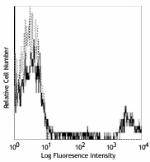
Human peripheral blood lymphocytes were stained with anti-CD... -
PE/Cyanine5 anti-human CD20
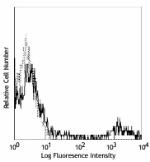
Human peripheral blood lymphocytes were stained with anti-CD... -
Purified anti-human CD20
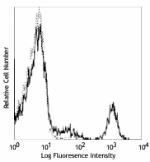
Human peripheral blood lymphocytes were stained with purifie... 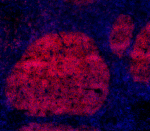
Human frozen tonsil section was fixed with 4% paraformaldehy... -
APC/Cyanine7 anti-human CD20

Human peripheral blood lymphocytes were stained with anti-CD... -
PE/Cyanine7 anti-human CD20
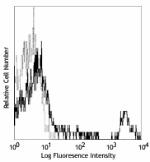
Human peripheral blood lymphocytes were stained with anti-CD... -
Alexa Fluor® 488 anti-human CD20
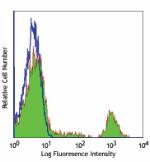
Human peripheral blood lymphocytes were stained with anti-CD... 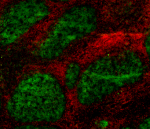
Human frozen tonsil section was fixed with 4% paraformaldehy... -
Alexa Fluor® 647 anti-human CD20
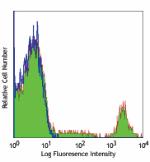
Human peripheral blood lymphocytes were stained with anti-CD... 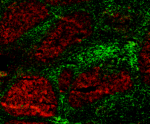
Human frozen tonsil section was fixed with 4% paraformaldehy... -
Pacific Blue™ anti-human CD20
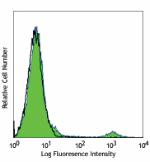
Human peripheral blood lymphocytes were stained with anti-CD... -
Alexa Fluor® 700 anti-human CD20
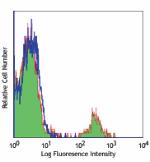
Human peripheral blood lymphocytes were stained with anti-CD... -
PerCP anti-human CD20
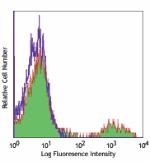
Human peripheral blood lymphocytes were stained with anti-CD... -
PerCP/Cyanine5.5 anti-human CD20

Human peripheral blood lymphocytes were stained with CD19 AP... -
Brilliant Violet 421™ anti-human CD20

Human peripheral blood lymphocytes were stained with CD19 PE... 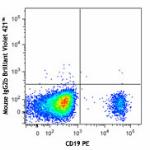
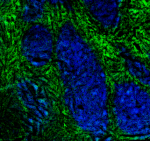
Human frozen tonsil section was fixed with 4% paraformaldehy... -
Brilliant Violet 570™ anti-human CD20
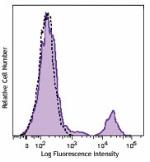
Human peripheral blood lymphocytes were stained with CD20 (c... -
Brilliant Violet 605™ anti-human CD20

Human peripheral blood lymphocytes were stained with CD20 (c... -
Brilliant Violet 650™ anti-human CD20
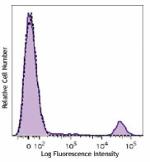
Human peripheral blood lymphocytes were stained with CD20 (c... -
Brilliant Violet 785™ anti-human CD20
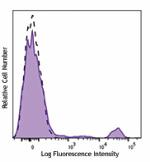
Human peripheral blood lymphocytes were stained with CD20 (c... -
Brilliant Violet 510™ anti-human CD20

Human peripheral blood lymphocytes were stained with CD20 (c... -
Brilliant Violet 711™ anti-human CD20
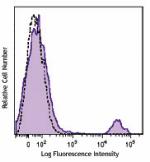
Human peripheral blood lymphocytes were stained with CD20 (c... -
Purified anti-human CD20 (Maxpar® Ready)
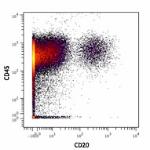
Human PBMCs stained with 154Sm-anti-CD45 (HI30) and 147m-ant... -
PE/Dazzle™ 594 anti-human CD20
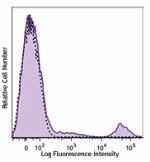
Human peripheral blood lymphocytes were stained with CD20 PE... -
Biotin anti-human CD20
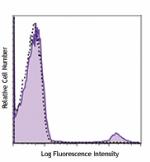
Human peripheral blood lymphocytes were stained with biotiny... -
APC/Fire™ 750 anti-human CD20
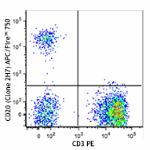
Human peripheral blood lymphocytes were stained with CD3 PE ... 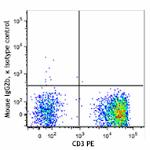
-
Alexa Fluor® 594 anti-human CD20
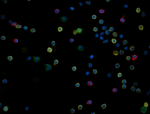
Human peripheral blood mononuclear cells were fixed with 2% ... 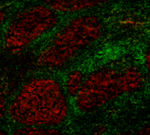
Human frozen tonsil section was fixed with 4% paraformaldehy... -
FITC anti-human CD20
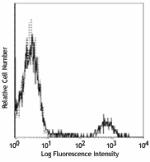
Typical results from human peripheral blood lymphocytes stai... -
Pacific Blue™ anti-human CD20
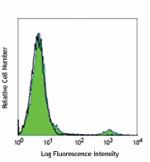
Typical results from human peripheral blood lymphocytes stai... -
APC anti-human CD20

Typical results from human peripheral blood lymphocytes stai... -
PE/Cyanine7 anti-human CD20

Typical results from human peripheral blood lymphocytes stai... -
TotalSeq™-A0100 anti-human CD20
-
TotalSeq™-B0100 anti-human CD20
-
TotalSeq™-C0100 anti-human CD20
-
PerCP/Cyanine5.5 anti-human CD20
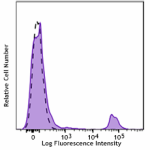
Typical results from human peripheral blood lymphocytes stai... -
Spark NIR™ 685 anti-human CD20

Human peripheral blood lymphocytes were stained with CD19 Br... -
Spark YG™ 593 anti-human CD20

Human peripheral blood lymphocytes were stained with CD19 Al... -
GMP FITC anti-human CD20
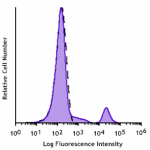
Typical results from human peripheral blood lymphocytes stai... -
TotalSeq™-D0100 anti-human CD20
-
GMP APC anti-human CD20
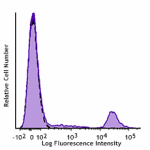
Typical results from human peripheral blood lymphocytes stai... -
Spark Violet™ 500 anti-human CD20

Human peripheral blood lymphocytes were stained with anti-hu... -
GMP Pacific Blue™ anti-human CD20
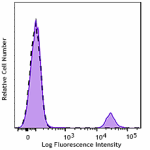
Typical results from human peripheral blood lymphocytes stai... -
GMP PerCP/Cyanine5.5 anti-human CD20

Typical results from human peripheral blood lymphocytes stai... -
Spark Violet™ 538 anti-human CD20

Human peripheral blood lymphocytes were stained with anti-hu... -
APC/Fire™ 750 anti-human CD20
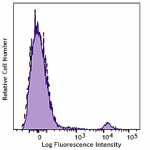
Typical results from human peripheral blood lymphocytes stai... -
PE anti-human CD20
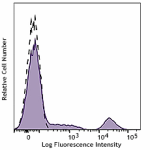
Typical results from Human peripheral blood lymphocytes stai... -
GMP PE/Cyanine7 anti-human CD20

Typical results from human peripheral blood lymphocytes stai... -
Spark Blue™ 515 anti-human CD20

Human peripheral blood lymphocytes were stained with anti-hu... -
GMP APC/Fire™ 750 anti-human CD20
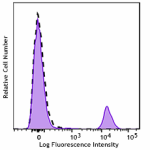
Typical results from human peripheral blood lymphocytes stai... -
GMP PE anti-human CD20

Typical results from human peripheral blood lymphocytes stai... -
Spark Blue™ 550 anti-human CD20 (Flexi-Fluor™)
-
Spark Blue™ 574 anti-human CD20 (Flexi-Fluor™)
-
Spark Red™ 718 anti-human CD20 (Flexi-Fluor™)
-
APC/Fire™ 810 anti-human CD20

Human peripheral blood lymphocytes were stained with anti-hu... -
Alexa Fluor® 660 anti-human CD20

Human peripheral blood lymphocytes were stained with anti-hu...
